The Xiaomi 11T arrived on the market in October 2021 and comes with a number of attractive features, including a 108 MP main camera. Let’s take a look at how it did in our DXOMARK display tests.
Key display specifications:
- 6.67-inch OLED display
- 164.1 x 76.9 x 8.8 mm (6.46 x 3.03 x 0.35 inches)
- Resolution: 1080 x 2400 (395 ppi)
- Aspect ratio: 20:9
- Refresh rate: 120 Hz
- MediaTek Dimensity 1200 5G (6 nm)
About DXOMARK Display tests: For scoring and analysis in our smartphone and other display reviews, DXOMARK engineers perform a variety of objective and perceptual tests under controlled lab and real-life conditions. This article highlights the most important results of our testing. Note that we evaluate display attributes using only the device’s built-in display hardware and its still image (gallery) and video apps at their default settings. (For in-depth information about how we evaluate smartphone and other displays, check out our articles, “How DXOMARK tests display quality” and “A closer look at DXOMARK Display testing.”)
Test summary
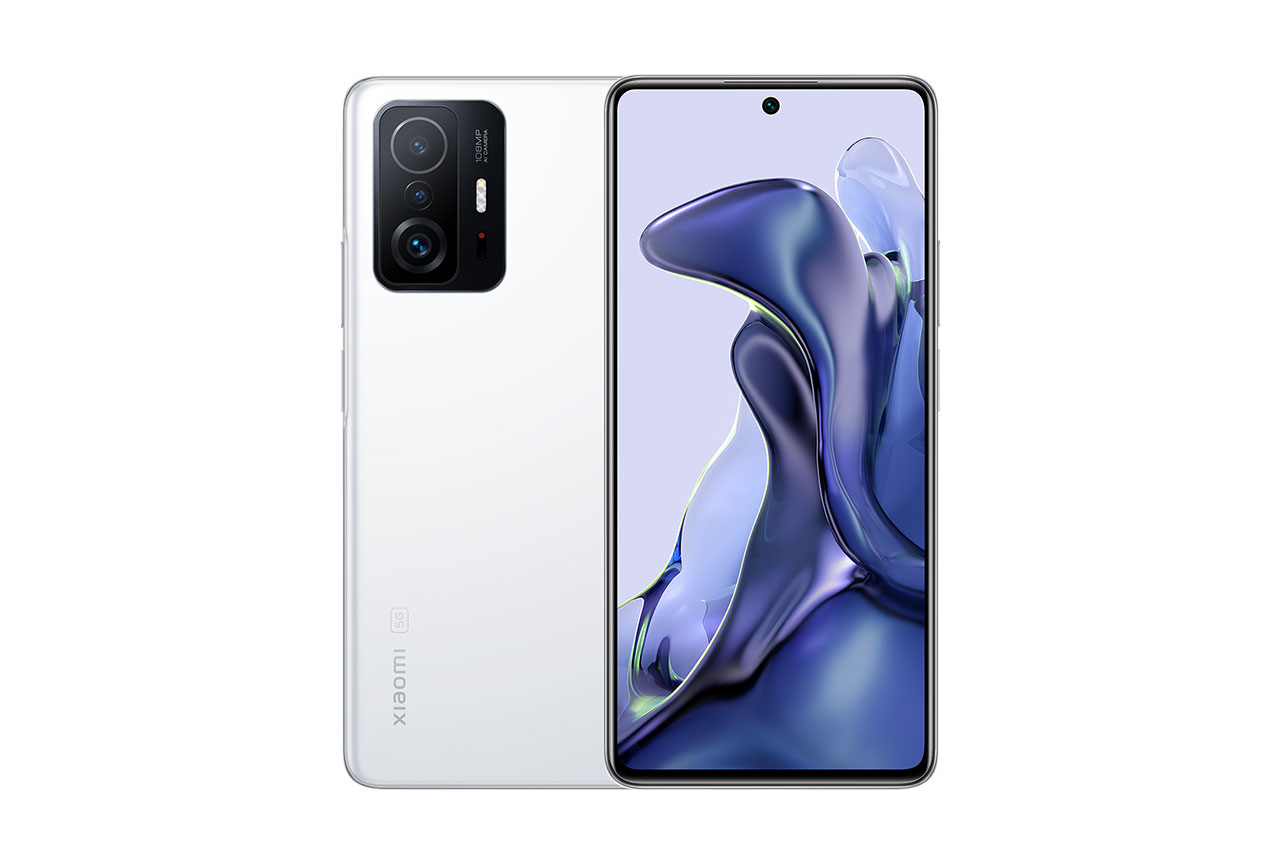 Xiaomi 11T
Xiaomi 11T


 23rd
23rd
 1st
1st
Pros
- Colors are accurate in most tested conditions.
- Good video rendering for HDR10 content.
- Smooth touch and no frame drops when gaming.
Cons
- Lack of smoothness when browsing web pages and viewing photos in the gallery.
- Undersaturated colors in low-light conditions.
- Slight grayish haze on dark tones in HDR10 videos.
The Xiaomi 11T is adapted to general uses, with great readability and color reproduction in most tested lighting conditions. Although not perfect with dark content, the device provides a satisfying experience when watching HDR10 videos, with only few frame drops. All in all, it is the best among our high-end segment and surprisingly comes in 2 points ahead of the Pro version that claims to have the same display specs (see details in the readability section).
Indoors, the device lacks brightness and details in the darker shades.




In addition, the engineers measured the gamma of both devices under sunlight. The Gamma 2.2 curve corresponds to the standard gamma measurement expected for sRGB and Display-P3 images in a dark room, and has been added to the graph for reference. The 11T has a smoother curve than the 11T Pro, resulting in better-conserved local contrasts and details.
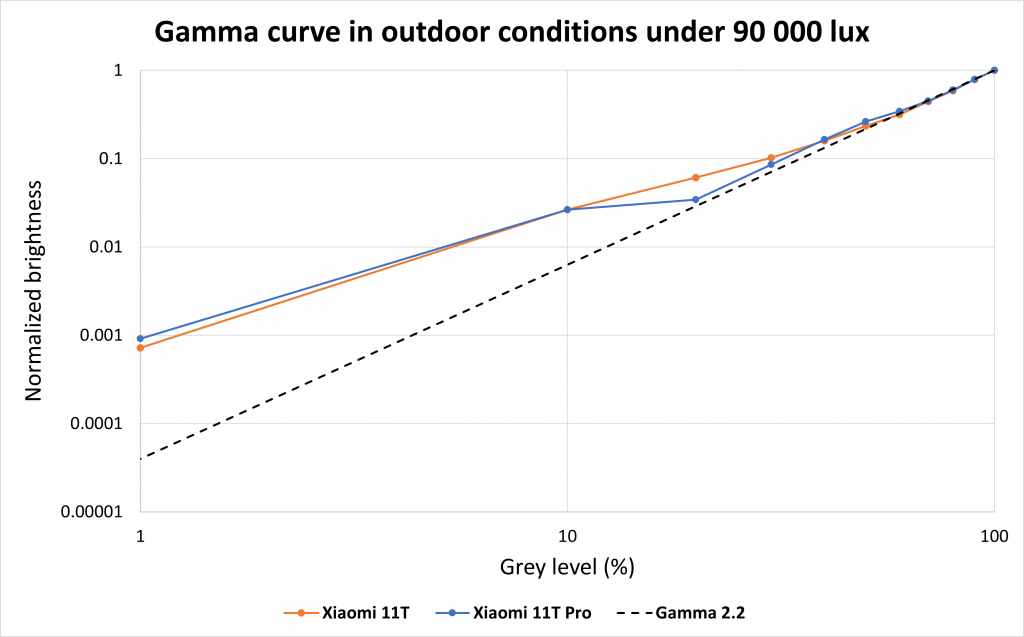

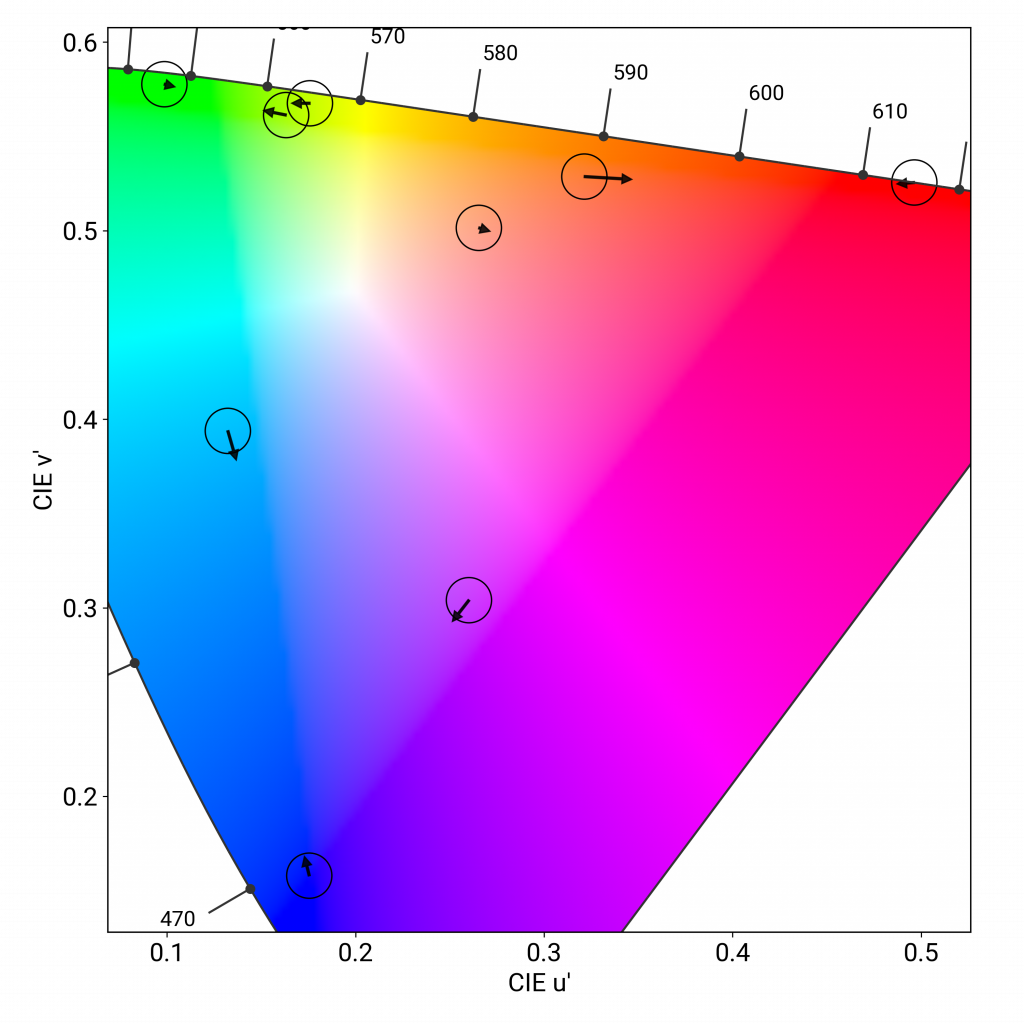
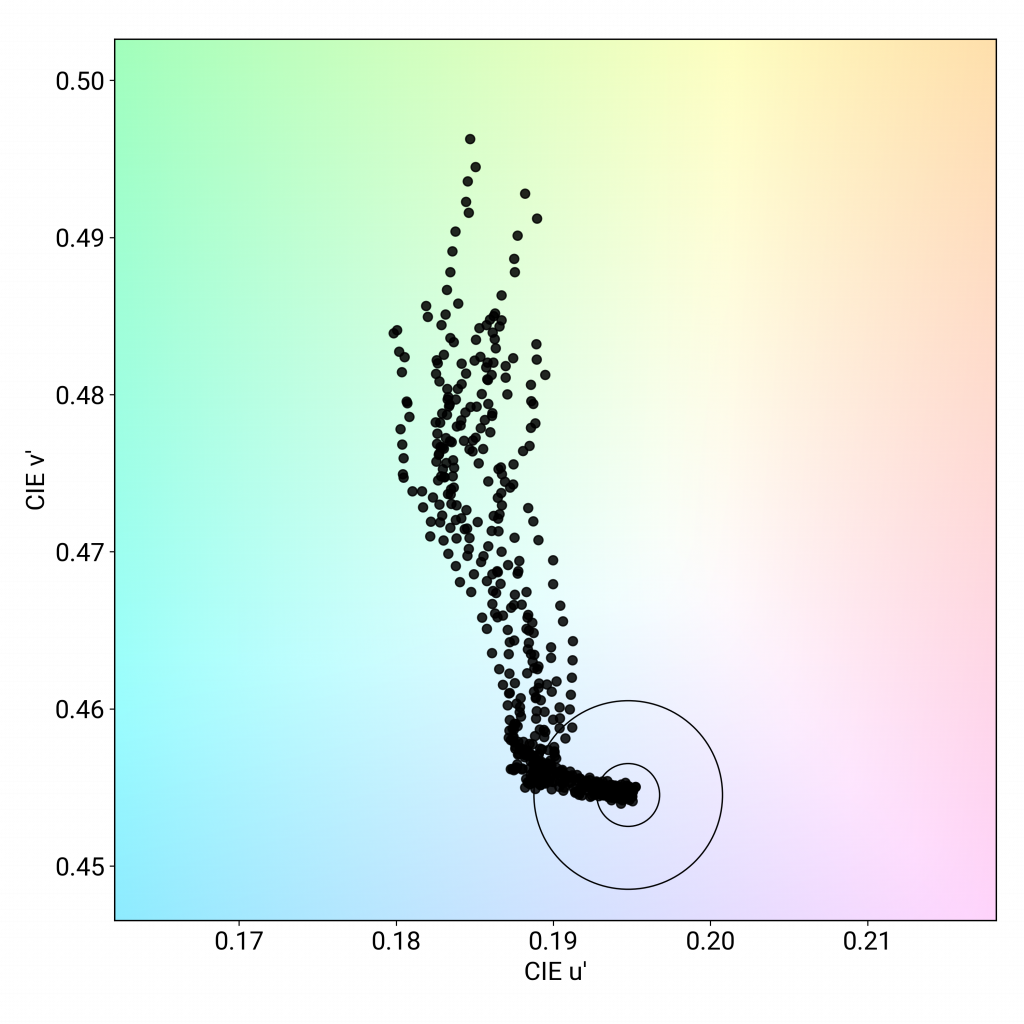
The Xiaomi 11T’s video brightness is well suited for watching HDR10 content, although mid-tones lack a bit of contrast. Darker shades are visible but there is a slight grey haze on the content. There is a blueish cast on content, including on skin tones, though the rendering remains acceptable.

When comparing the Xiaomi 11T with the 11T Pro, our engineers noticed that even though the Xiaomi 11T Pro is brighter overall, its dark tones are dimmer and are harder to see than those on the 11T. In the example below, the Xiaomi 11T is on top and the Xiaomi 11T Pro is on the bottom. Dark tones are more visible on the Xiaomi 11T than they are on the Xiaomi 11T Pro (particularly in the sky and on the left side of the photo).
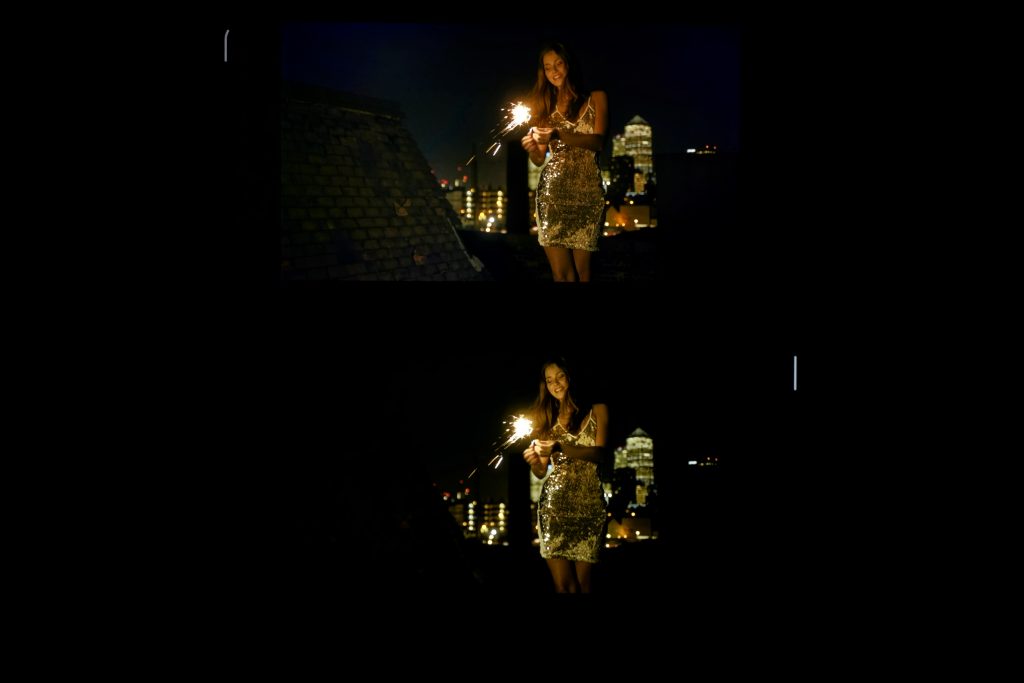
The EOTF (Electro-Optical Transfer Function) describes how the video data is converted to a particular brightness on the screen. The PQ (Perceptual Quantizer) is the standard EOTF of the HDR10 video format, and represents the tone mapping of the videos. The EOTF measurement of the 11T and the 11T Pro in a dark room confirmed the perceptual evaluation: the darker shades are brighter on the 11T compared to the 11T Pro despite a lower peak brightness. On the Xiaomi 11T, darker details are more visible but flattened, explaining the noticeable grey haze. To preserve a similar artistic intent, we expect measured the EOTF curve to have the same shape as the PQ standard, although less bright since it is measured in low light.
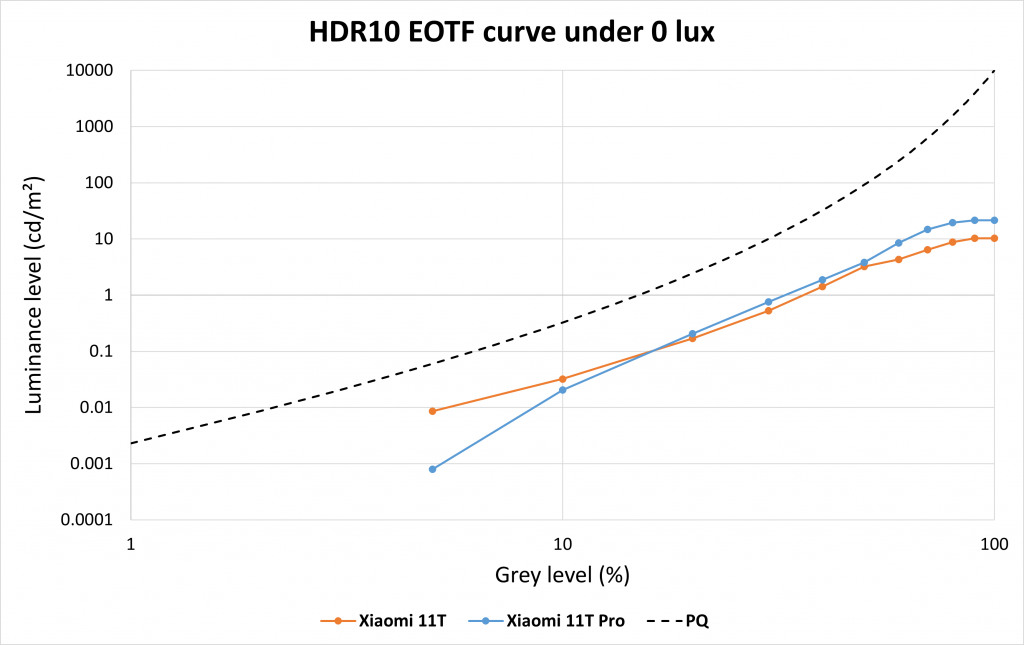
The Xiaomi 11T shows frame drops and stutters at both 30 fps and 60 fps, as shown below; however, no frame drops were noticeable while playing video games. After using the slider, there is a slight delay before the video resumes.


The device is fairly smooth when browsing the web and when scrolling in the gallery, but some frame duplications and frame drops occur from time to time.
Despite being responsive to ghost touches and showing a bit of aliasing (see Xiaomi 11T and Xiaomi 11T Pro comparison below), the Xiaomi 11T offers a pleasant experience overall when gaming.


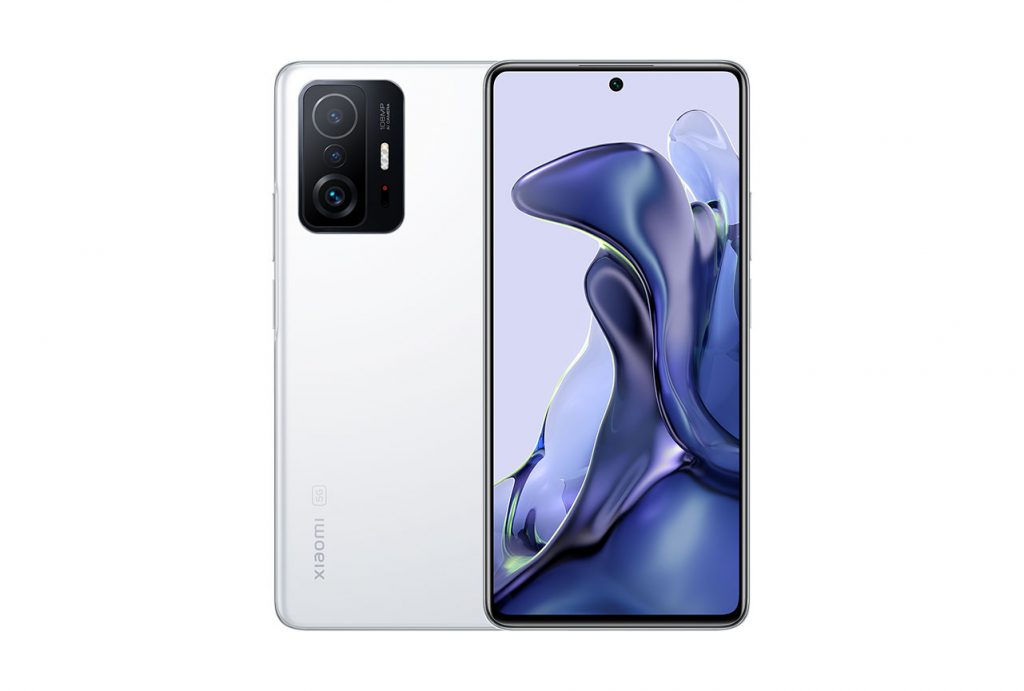

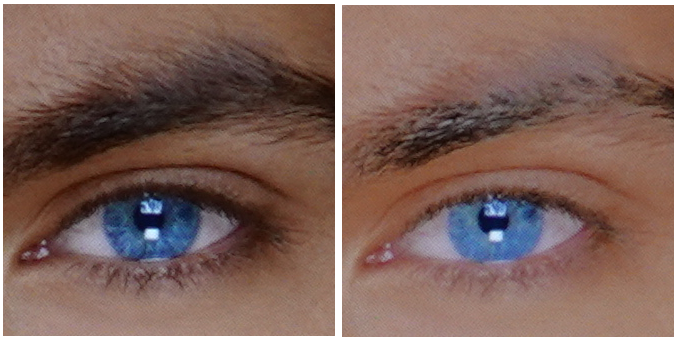
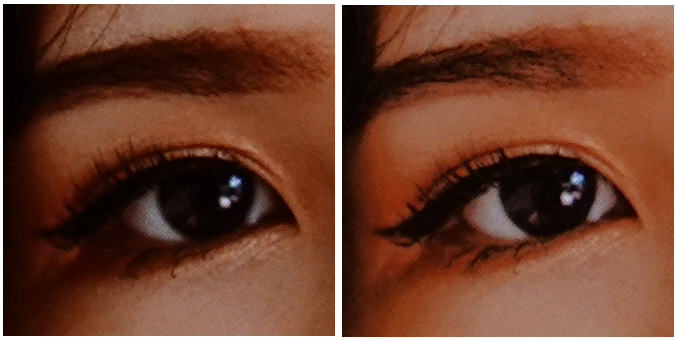


DXOMARK encourages its readers to share comments on the articles. To read or post comments, Disqus cookies are required. Change your Cookies Preferences and read more about our Comment Policy.